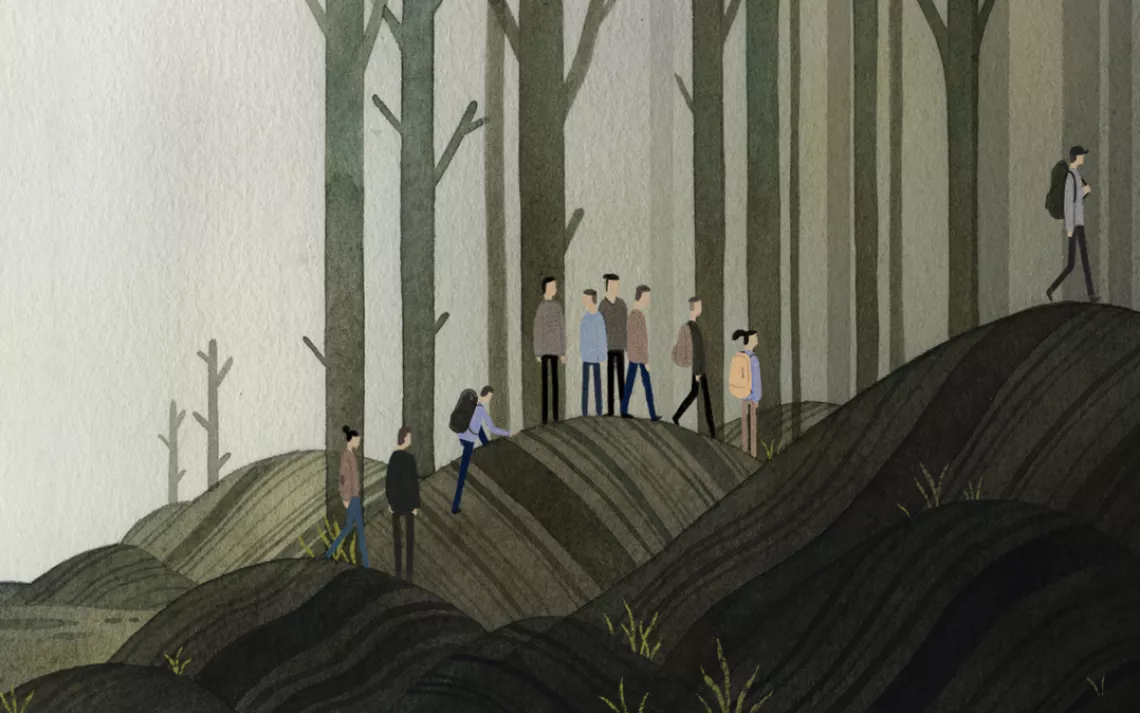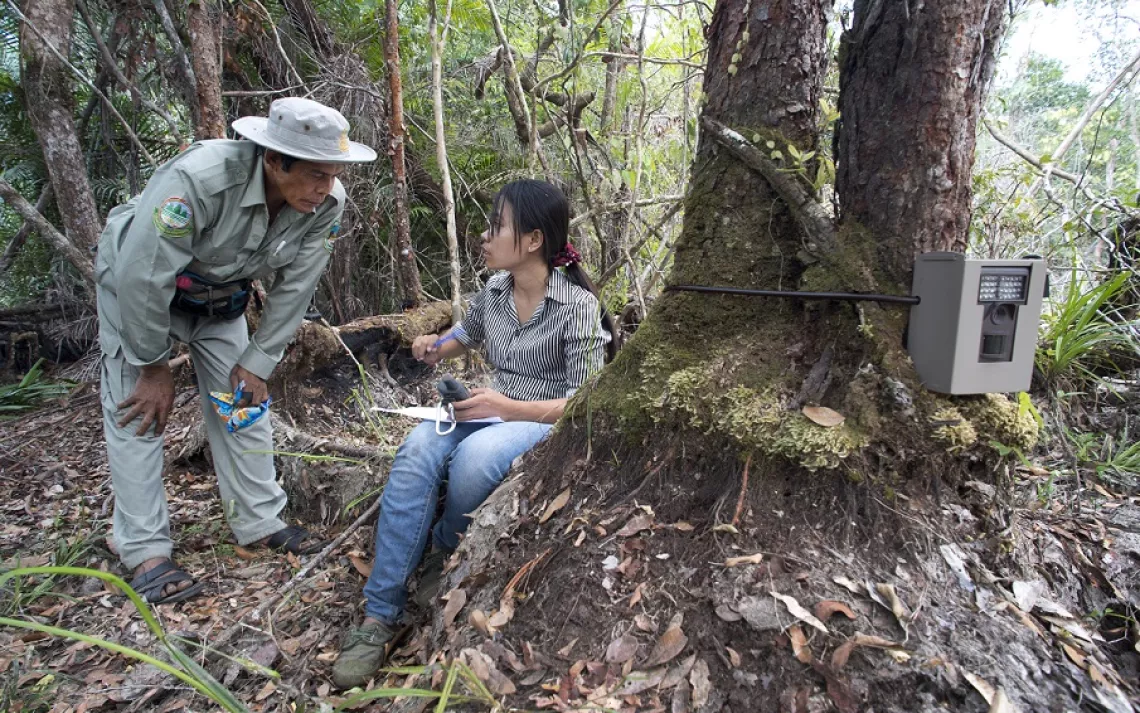The Unlikely Treehuggers of Coal Country
A biology professor takes his students to Stone Mountain Wilderness

Illustration by Maggie Chiang
At the beginning of each fall semester, I ask my conservation biology students to discuss what comes to mind when they think of sustainability. Here in the heart of southwest Virginia's coalfields, a single word often crops up first.
"Treehuggers," someone will growl. The response doesn't come as a shock. It's no secret that central Appalachia is locked in a battle for its soul. The coal industry that dominated the region for so long is waning, leaving communities struggling to craft new economies around ecotourism, outdoor recreation, and the tech industry. To grow up in coal country is to internalize a host of preconceptions, not the least of which is that environmental preservation is a threat.
The news of Appalachia's transition has been bleak, and myriad photo essays have turned a lens on the region's most dilapidated towns—its worst examples of poverty. I teach at a small liberal arts college in one of the most heavily surface-mined counties in Virginia, and it's not uncommon for students to seem worn down by the region's challenges. "There's nothing to do here," I'm often told. Nothing to see and no hope for the future other than to leave the mountains. With so much of the region facing economic and environmental ruin, we often overlook the treasures and promise that these hollows still hold.
That's why each year I take my class on a hike up to Roaring Branch cove. This unassuming jumble of hills, tucked into a remote corner of the George Washington and Jefferson National Forests, contains some of the only federally designated wilderness in the nation where mountaintop removal rages nearby. While that may sound unattractive, this place thrives on juxtaposition. A 14-mile trail runs from busy Highway 23 up the length of the hollow and into the 3,270-acre Stone Mountain Wilderness, a rare intact ecosystem in the middle of the Appalachian coalfields.
Roaring Branch was spared from commercial logging and mining thanks to its steep topography; it's sheltered in a cliff-lined cove gouged into the brow of Stone Mountain. The forest is dark, imposing, and wondrously wild—perhaps how the Appalachian woods appeared to Daniel Boone. Eastern hemlocks 200 years old tower into the canopy. A dew-soaked understory kaleidoscopes beneath, shaded into twilight at midday.
I bring my students to Roaring Branch not just to see this ecosystem but to feel it, to climb the cove on a dry day and come out wet from its greenhouse-like microclimate. I hike them into the old growth to talk about forest ecology, about nutrient limitation and species interactions, and about the delicate, emerald pelt of a nurse log. But mostly, I bring them there so they can stand in the forest and consider the audacity of virgin timber. It's a part of the mountains so few of them realize exists.
On a recent class hike to the cove, I notice someone's gone missing. After a quick glance around, I find him, one of the students who'd growled "treehugger" with such disdain. He's lagged behind the group and has his hand on a behemoth hemlock at least three times as wide as he is. He's not hugging the tree, but it's close enough.
"I never knew all this was up here," he says, aiming his gaze down the axis of the cove—maybe even beyond it. We haven't talked about climate change yet. We haven't toured a surface mine, taken water samples from the base of a highwall, or pored over remote-sensed maps of forest-cover loss. That will all come, but for now we've simply spent an afternoon with big trees. "God," he says, "they just keep going."
And he's right, of course. Sometimes the thickest of forests let us see for miles.
This article appeared in the May/June 2017 edition with the headline "An Unlikely Embrace."
 The Magazine of The Sierra Club
The Magazine of The Sierra Club







